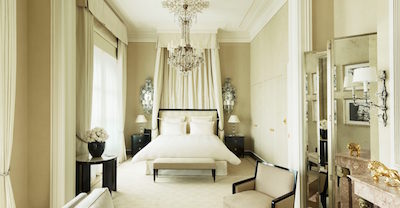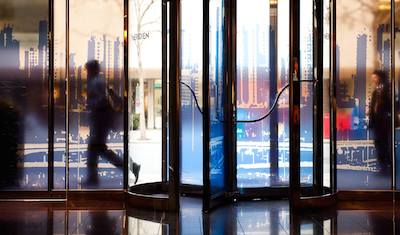Hilton-owned Waldorf Astoria Hotels & Resorts is climbing the ranks in terms of international brand awareness, despite consumers spending less time traveling, according to the Luxury Institute.
JW Marriott, InterContinental, Four Seasons, Grand Hyatt and The Ritz-Carlton have maintained their places as the most visited hotel brands, reported last year and this year in the LBSI Global Hotel study. However, affluent consumers are cutting down on hotel stays with modest decrease in number of nights stayed.
“While the top scoring brands continue to do very well year-over-year, the Waldorf Astoria has done phenomenally well in improving international brand awareness of their properties over the last several years,” said Milton Pedraza, CEO of the Luxury Institute.
“There are no real surprises. We expected that consumers may travel less, and the research shows that affluent consumers spent two nights less on average than they did last year,” he said.
“As occurred, we expected a slight pullback in nights spent and that can be attributed to macro-economic factors that have negatively effected global tourism.”
Travel insights
As the top hotels remain in their places as the leaders, JW Marriott saw a significant increase in visitors from the United States and China. However, affluent travelers from France visited Club Med, Le Meridien and Sofitel the most, and Kempinski Hotels was frequented by German consumers.
There has been a slight drop in the nights stayed due to economic influences, which coincides with insight revealing that most affluent consumers are staying in the hotel brands for vacation and leisure. On average, total night stays dropped from 19 to 17 in one year.
However, U.S. consumers were the only demographic that has seen an increase in the number of nights in luxury hotels. Europe had the biggest impact with German consumers dropping down to an average 19 nights from 26, and French travelers from 23 to 19.
Another report from the China Outboard Tourism Research Institute revealed that international markets saw a 16 percent increase in Chinese outbound travelers, but closer to home, in Greater China, there was a 7 percent decline in tourism for the first half of 2016.
COTRI found that there were 64 million border crossings from Mainland China between January and June of 2016, resulting in a growth rate of 3.4 percent. Much of the luxury market relies on Chinese outbound travelers who visit brand stores and duty free shops to make high-end purchases as a method to avoid the high tax at home (see more).
Affluent customers traveling for leisure for one week or more make up more than 31 percent of global travelers. About 62 percent travel with their spouses, only 16 percent travel alone and 11 percent are with business companions.
Winning consumers
Hotel brands that create the ultimate luxury experience by tapping into on-site associates win out. Employees that go above and beyond for guests can make or break the brand.

Ritz Paris Hotel Suite Coco Chanel suite
However for ski resorts, the opulence and amenities available are helpful but do not protect the sector from customers’ hunting for a deal, with buyers appreciating a good value, according to a separate report by Knight Frank.
Affluent customers who enjoy homes in the mountains and ski resorts as second residences still want to be sure that they are getting a good deal, with interest in locations that offer great values such as Chamonix and Saint Gervais, France, both near the base of Mont Blanc in the Swiss Alps, strengthening. Customers want worth and appeal for their purchases and investments, making villages such as Val d’Isere Verbier, Switzerland and Chamonix best-in-class considerations (see more).
“As we see from the five top-rated hotel brands, achieving a high LBSI score strongly correlates with the ability to charge a premium price,” Mr. Pedraza said. “One thing we know from other Luxury Institute research is that while the locations, facilities and amenities are important they do not provide the ultimate competitive advantage.
“The ultimate advantage is the experience with the brand ambassadors in how well they develop a personal emotional connection with guests during their stay,” he said.
from Travel and hospitality – Luxury Daily https://www.luxurydaily.com/top-luxury-hotels-remain-leaders-despite-drop-in-global-travel/
via Your #1 Source to Finding Luxury & Designer Goods, Handbags & Clothes at or Below Wholesale: Click Here.


No comments:
Post a Comment